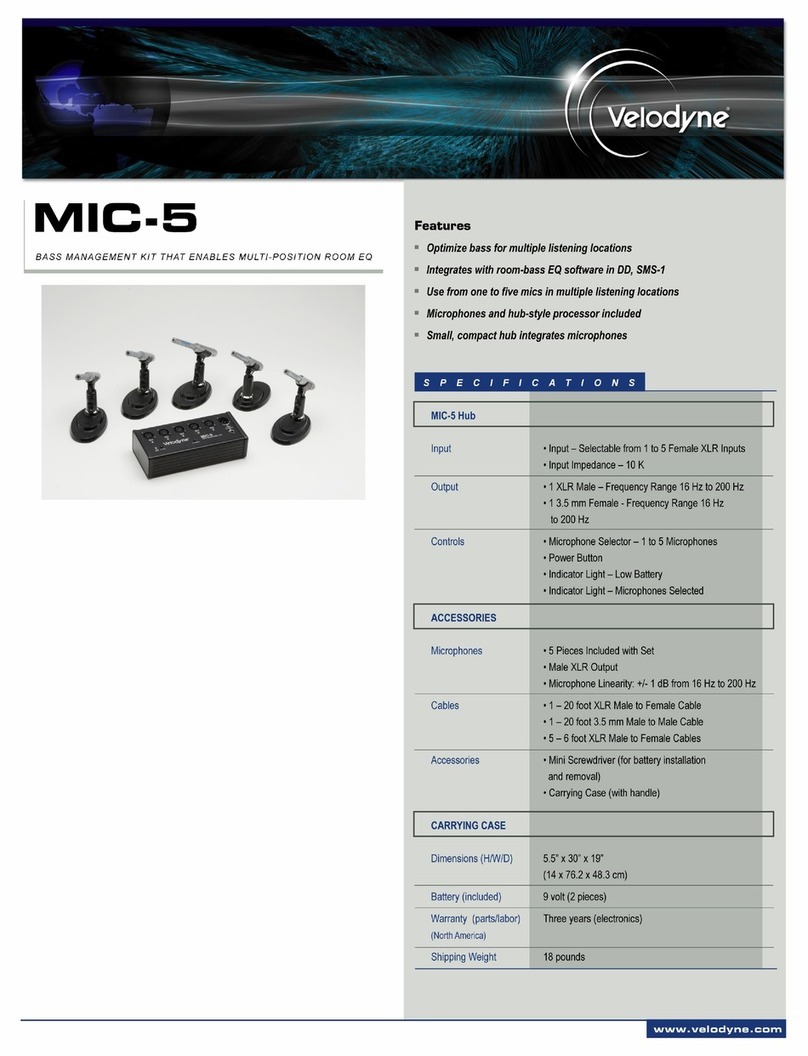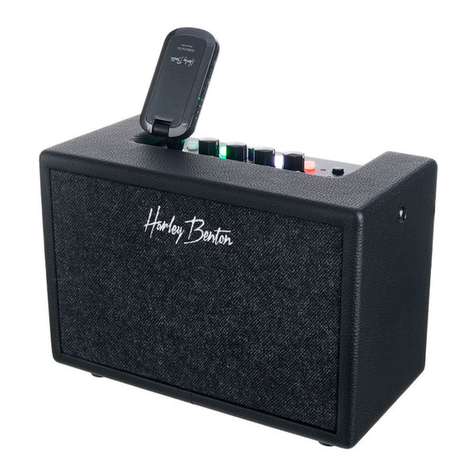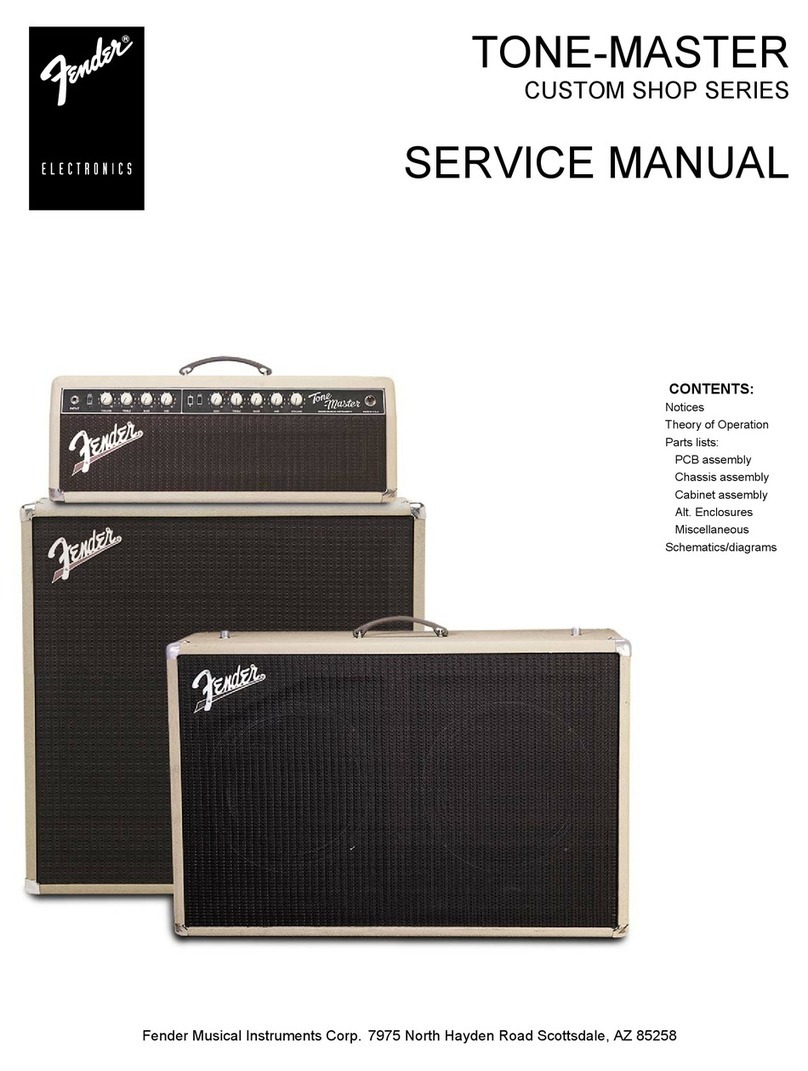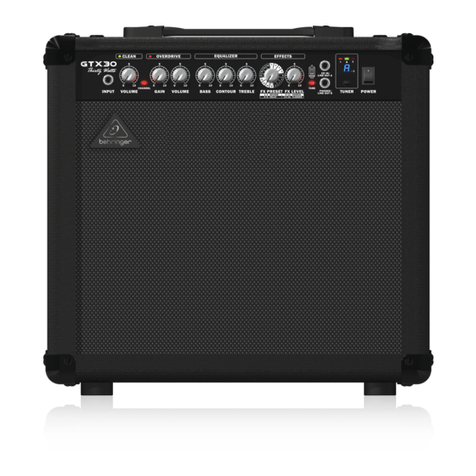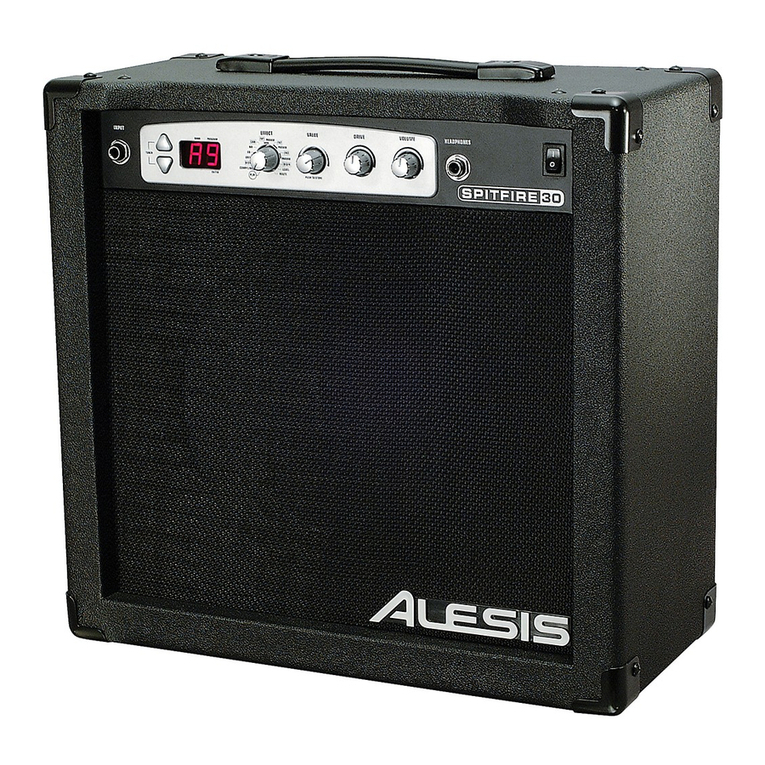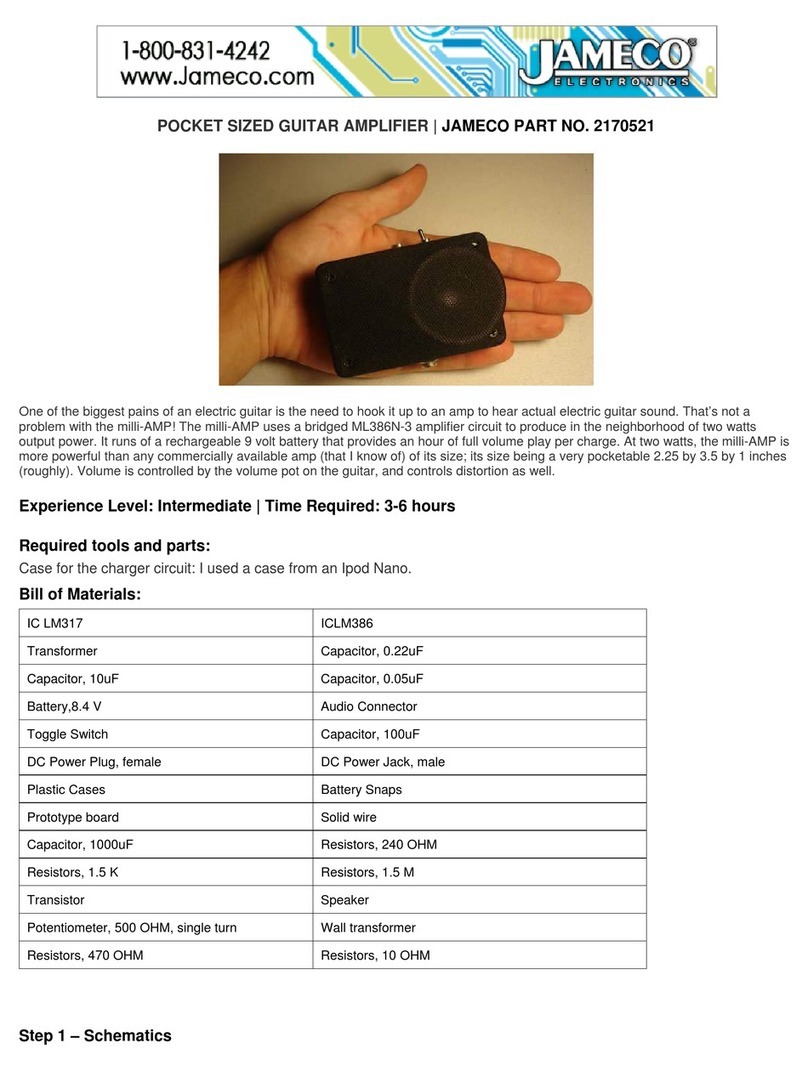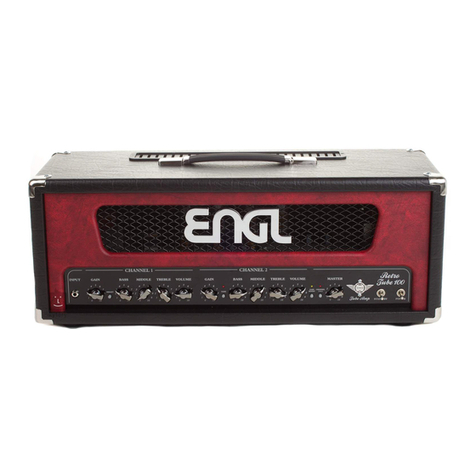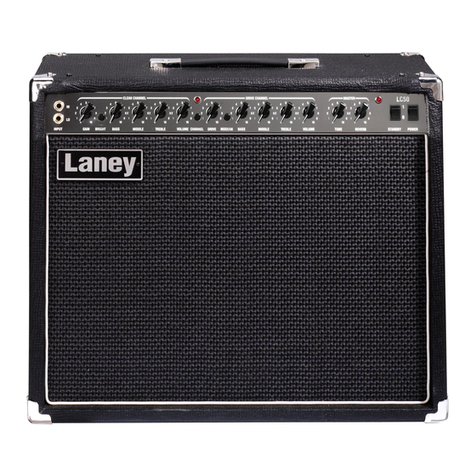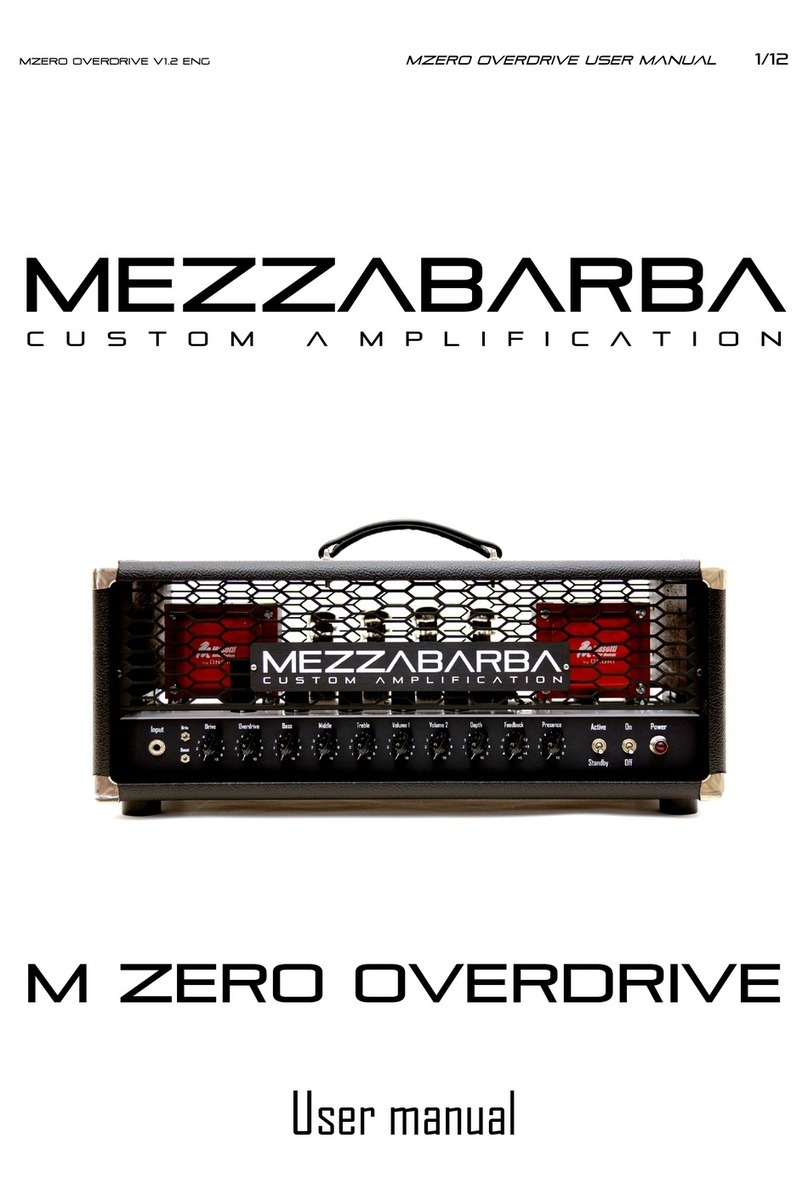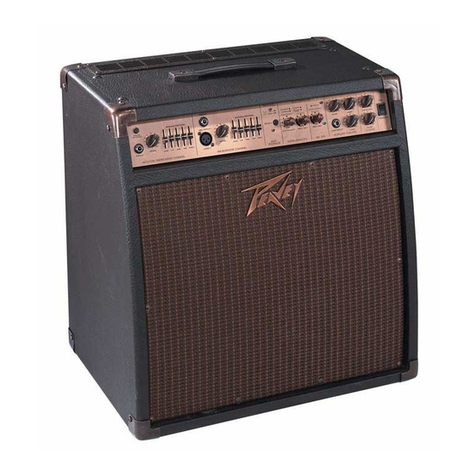Garland Ruby V56 User manual

owner’s guide
Congratulations, you now own one of the most expressive amplifiers in the
history of the electric guitar. This is my slightly reimagined version of the
venerable cathode-biased narrow panel tweed deluxe amp that was originally
designed and produced in 1956-1957.
The Garland Ruby model V56 is not a clone, but rather a reinterpretation.
Right away you’ll notice the main difference—the GRM V56 has no tweed
fabric glued to the exterior. Subtle as the sonic effect may be, a cabinet
covered with glue and fabric can’t possibly resonate as freely as an uncovered
amp. Taking my cues from the world of fine acoustic guitars, I’ve chosen a mix
of softwoods, hardwoods, and plywoods designed to work together to enhance the
rich harmonic content of the amplified signal.
And the visual appeal of the hand crafted box-jointed cabinetry speaks
for itself. After one look at the prototype my wife declared it “beautiful” and
suggested that I should build amps like this to sell. Call it “wife-friendly.”
Your Garland Ruby V56 is an amplifier you’ll want seen as well as heard.
The detailed cabinetry is at home in just about any room, there’s no need to
hide it in a basement or closet. Because the main cabinet walls are made of
solid softwoods (cedar or pine) you should avoid rough handling to preserve the
beauty of the finish. Still, the amp is extremely light and portable, and with
a proper case or padded gig bag there is no reason the 5V3 can’t get out of the
house.
Inside the steel chassis the time proven circuitry is hand wired from the
best components available. Classictone transformers, F&T and Sprague
capacitors, Vishay Dale metal film and/or carbon comp resistors, Ohmite wire
wound resistors, Carling switches, Bourns potentiometers, and Switchcraft jacks
add up to create a world class signal path. Even the nuts and bolts are solid
stainless steel. I’ve built this amplifier to last a lifetime.
In these pages I will give you a few ideas about how to get the most out of
your Garland Ruby V56. I hope you enjoy yours as much as I do mine!
Andy Church, Garland Ruby Music Rowayton, CT!
©2015 Garland Ruby Music, LLC
Hand Built Guitar Amplifier
V56

Garland Ruby V56 Operation
Getting the most from this amplifier might require that you rethink your usual
approach to guitar amp settings. With most amplifiers, in my experience, establishing a
tone starts by setting the guitar’s controls to reasonably high levels, and then using
the amplifier’s controls to fine tune the volume and tone. Yet the vast majority of
narrow panel tweed deluxe aficionados agree that the magic in this circuit is
unleashed by reversing that process. This amp really shines brightest when turned
nearly all the way up, "dimed" as we say, and then relying on the guitar's onboard
controls and playing dynamics to achieve the desired volume and tone.
The V56 has two channels--a Normal channel and a Bright channel—each with one
high gain input and one low gain input. Each channel has a Volume control, and both
channels share a single Tone control. This may seem straightforward, but in use the
circuit is more complicated than it would appear.
Both Volume controls affect the sound, regardless of whether or not that control
correlates to the channel into which the guitar is connected! Furthermore, the Tone
circuit is not a simple low pass filter that cuts treble when dialed back (although
treble cut does occur), but instead interacts with both Volume circuits to change the
overall harmonic content in subtle but surprising ways.
There is no limit to the varieties of tone you might discover experimenting with
the settings, but here I will describe what I along with many other narrow panel tweed
deluxe amp owners have found to be a great starting place:
—Connect a favorite guitar to the Bright high gain input jack, nearest the rear
edge of the chassis, toward the center of the amp. (If possible use a guitar with
a single master volume control, it makes for faster and easier adjustments.)
—Power up with all amp and guitar controls set at 0. Wait about a minute, then
exit standby mode.
—Turn the amplifier Normal Volume knob clockwise to about 75%.
—Turn the amplifier Bright Volume knob clockwise to about 90%.
—Turn the amplifier Tone control clockwise to about 90%.
—Now very slowly increase volume and tone controls on your guitar.
—Experiment for at least an hour with different combinations of pickups,
varying the volume and tone settings on your guitar. Explore different playing
techniques and styles of music. Use a pick, use your fingers, use your ears.
Try not to rush to judgement—-this circuit takes time to understand and
appreciate. It’s an amazing way to discover all your guitar can really do.
With the guitar volume set low the amp can produce a wide range of clean tones,
from dark and woody with tone dialed back, to clear, bellish and chimey at brighter
settings.
With the guitar volume set In the intermediate range the amp really starts to
growl, either with a deep throatiness (great for a wah pedal) with the tone rolled back,
or with ragged crunching and ripping with brighter settings.
Finally, experience the unique thrill of the V56’s richly saturated fully
overdriven solo tone with nearly infinite harmonic sustain: switch to the rear bridge
pickup on your guitar and turn all the controls on the amp and guitar to their full
clockwise position. You are now diming a deluxe!
©2015 Garland Ruby Music, LLC
Table of contents
